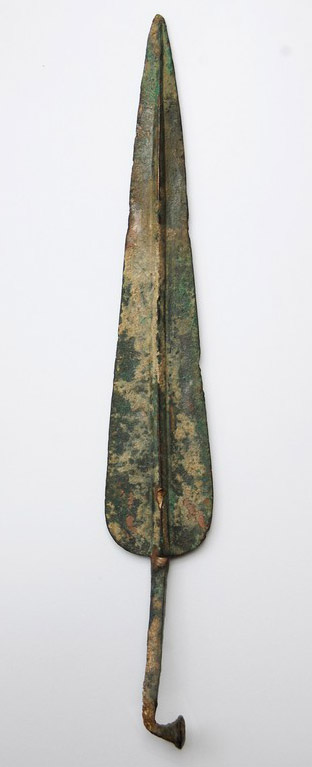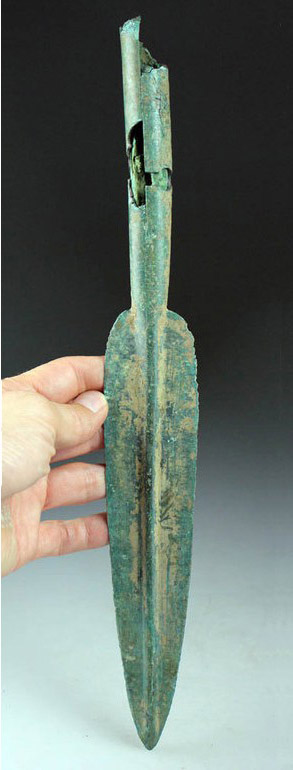I am collector of Cypriot antiquities, mostly from the Bronze Age, but continuing into the Geometric and Archaic periods. I have also been studying the Archaeology and history fairly intensively.
I am giving my collection back to a museum in Cyprus gradually (it was almost all probably looted from tombs originally so there is a sort of justice there). I am currently occupied writing a catalogue, with the help of a young Cypriot archaeologist
I have two large spearheads, one from the Early Bronze Age (Philia period up to Early Cypriot II, 2500 - 2100 BC) and the other from the End of the Late Bronze Age (Late Cypriot III 1200-1050 BC)
The older one (38cm long) has a hooked tang with a button on the end. I have heard that it is believed that a hooked tang was inserted into the haft by splitting the end of the haft, inserting the tang into a groove in the wood and then binding the join. However my archaeologist will not allow me to print this unless I can find some authority for it (experimental archaeology is fine). Does anyone know a book or paper I might look at or a person who might help me?
Since before about 1600BC we have no evidence for(or against) shields it is unclear if it would have been used two handed or one handed.
Thanks
David[/img]
[ Download ]


